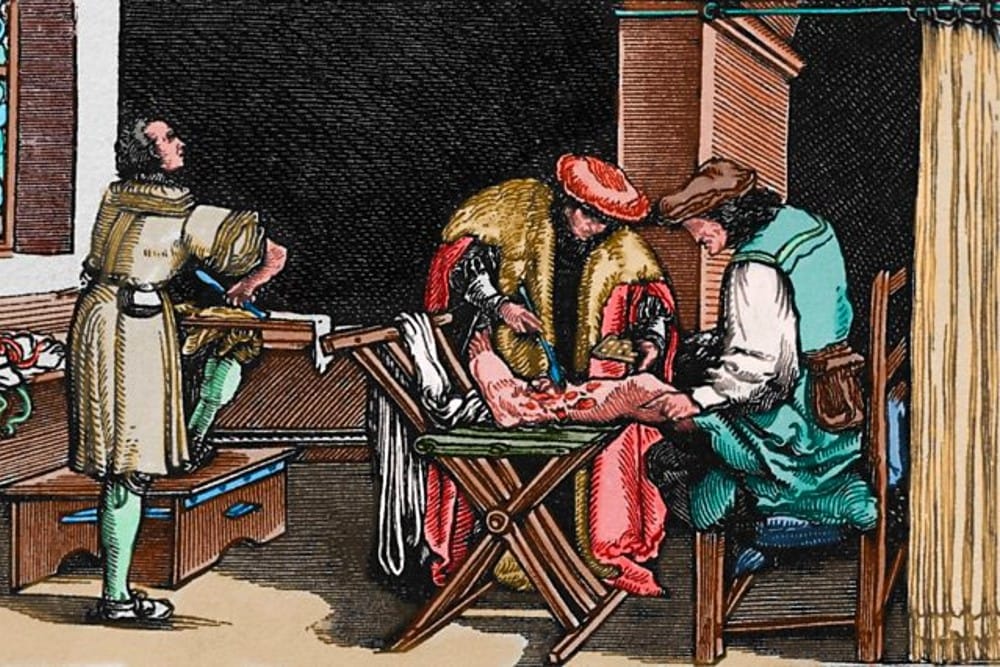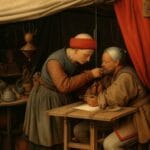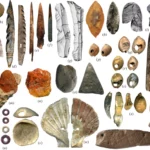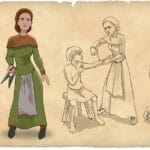Imagine venturing back to the Middle Ages and witnessing surgery firsthand. Picture surgeons using crude tools to perform harrowing procedures with little to no pain relief. Yet, amidst the blood and gore, there was hope. Surgeons were daring explorers, pushing the boundaries of medical knowledge, driven by a relentless desire to heal. Join us as we journey into “The Razor’s Edge: Surgery in Medieval Times,” where the gruesome beauty of medieval medical practices comes to life.
Surgery in Medieval Times: Surprisingly Advanced
We often picture the medieval period as a dark age for medicine, but when it came to surgery, things were surprisingly advanced. While they lacked modern marvels like scanners and antibiotics, medieval surgeons were masters of their craft, pulling off impressive procedures with limited tools. Amputations, approached with caution even today, were commonplace, and trepanation, the drilling of holes into the skull, was well within their capabilities.
One of the biggest influences on medieval surgery came from the Muslim world. Muslim physicians brought groundbreaking techniques to Europe, including cauterization (using heat to seal wounds) and cataract removal. Salerno, Sicily, became a medical hub where Christian and Muslim doctors collaborated, pushing surgical boundaries.
Without X-rays or blood tests, medieval surgeons relied on keen observation, feeling for abnormalities, and analyzing pulses. Examining urine was another vital diagnostic tool. These methods, though basic today, provided valuable insights into the body’s inner workings.
Ironically, warfare played a crucial role in advancing medieval surgery. The Crusades, while brutal, provided a crash course in trauma care. Surgeons on battlefields witnessed a constant stream of injuries, becoming experts in treating wounds, setting bones, and performing emergency amputations. This constant exposure honed their skills and led to the development of specialized instruments and battlefield medicine techniques.
Medieval surgery was an incredible mix of resourcefulness, cultural exchange, and raw talent. While they didn’t have all the answers, their ingenuity laid the foundation for the advanced surgical practices we benefit from today. It’s a testament to the enduring human spirit and our constant drive to heal.
What Were the Tools and Techniques of Medieval Surgery?
Imagine a time when a simple cut could mean life or death. That was the reality of surgery in the medieval period. Medical knowledge was limited, procedures were risky and incredibly painful, and infections were a constant threat. Barber-surgeons, the doctors of the day, learned their trade mainly through hands-on experience, often apprenticing under more experienced practitioners. They relied heavily on ancient medical texts, some of which contained outdated or inaccurate information.
Operating rooms, as we know them, didn’t exist. Surgeries were performed wherever was convenient—in homes, marketplaces, or even battlefields—often in less-than-sanitary conditions. This lack of cleanliness made post-surgical infections a common and deadly complication.
A Surgeon’s Toolkit: Basic But Brutal
Despite these challenges, medieval surgeons developed a surprising array of tools to treat injuries, stop bleeding, and even perform complex procedures. Let’s take a look inside a medieval surgeon’s kit:
| Tool | Purpose |
|---|---|
| Knives | Making incisions and dissecting tissue |
| Saws | Amputating limbs, often causing significant trauma |
| Needles & Thread | Sewing up wounds, though infection was a risk |
| Cauterizing Irons | Sealing wounds and stopping bleeding with heat |
| Trephines | Drilling into the skull to relieve pressure |
Medieval Operating Room: Procedures Both Practical and Perilous
Medieval surgery wasn’t for the faint of heart. Here are some of the procedures that a medieval surgeon might perform:
- Amputation: When gangrene set in or an infection raged, amputation was often the only option, a desperate attempt to stop its spread.
- Wound Care: Cleaning and dressing wounds were crucial. Vinegar or wine served as antiseptics, while linen or animal skins were used as bandages.
- Trepanation: This procedure involved drilling a hole in the skull to relieve pressure caused by head injuries, seizures, or even mental illness.
- Bloodletting: Based on the ancient theory of balancing bodily fluids, bloodletting was a common practice thought to cure a wide range of illnesses.
The Legacy of Medieval Surgery: A Stepping Stone to Modern Medicine
While it’s easy to look back at medieval surgery with a shudder, it’s important to remember that these practitioners were pioneers in their own right. They faced enormous challenges with limited resources, yet they laid the groundwork for the advancements in medicine that we benefit from today. Their efforts, however rudimentary, represent a crucial step in the long and often harrowing journey of surgical progress.
Who Were the Prominent Figures in Medieval Surgery?
Surgery in the Middle Ages was a risky business, often a last resort in a time without hospitals, sterile equipment, or effective pain relief. Yet, some brave and ingenious individuals rose to the challenge, becoming pioneers who transformed the field.
One such figure was John of Arderne, a 14th-century English surgeon. His book, “Practica,” became a seminal guide for treating wounds, removing cataracts, and fixing fistulas. Arderne also founded the Guild of Surgeons in London, a precursor to modern surgical societies.
William of Saliceto, an Italian surgeon, was a proponent of cleanliness long before the principles of antiseptic surgery were understood. His book, “Summa Conservationis et Curationis,” emphasized wound care and the treatment of infections.
Interestingly, barbers played a crucial role in medieval healthcare. These barber-surgeons started with simple procedures like bloodletting and lancing boils but gradually took on more complex surgeries. Guy de Chauliac, a prominent 14th-century French barber-surgeon, authored “Chirurgia Magna,” a comprehensive surgical text used for centuries.
These figures, and many others like them, were the unsung heroes of medieval medicine. They faced incredible challenges but pushed the boundaries of what was possible, paving the way for the advanced surgical techniques we have today.
How Did Warfare Shape Medieval Surgical Practices?
Medieval battlefields were harsh proving grounds for surgical innovation. The constant need for medical attention during times of war pushed medieval healers to develop surprisingly advanced skills. Let’s explore how warfare became a driving force behind the development of surgery in the Middle Ages.
Medieval Battlefields: The Unlikely Birthplace of Surgical Advancements
In a world without hospitals, battlefields became makeshift surgical theaters. Surgeons, faced with a deluge of wounded soldiers, had no choice but to learn on the job. This constant demand for their skills led to rapid advancements in surgical techniques.
Barber-Surgeons: From Haircuts to Healing Wounds
Barbers, already skilled with sharp tools and possessing a basic understanding of anatomy, took on the role of surgeons. They treated wounds, performed bloodletting, and eventually conducted surgeries, becoming the primary caregivers for both everyday people and wounded soldiers.
The Crusades: A Melting Pot of Medical Knowledge
The Crusades, despite their violence, brought about a significant exchange of medical knowledge. As surgeons from different regions interacted, they shared techniques, remedies, and surgical practices. This melting pot of medical knowledge helped advance the field as a whole.
Medieval Surgeons: More Skilled Than You Might Think
Despite lacking modern anesthesia and sterile environments, medieval surgeons successfully performed complex procedures. They could amputate limbs, perform trephination (drilling holes in the skull to relieve pressure), and treat a variety of wounds. Their understanding of wound care and preventing infections was particularly impressive.
The Lasting Legacy of Battlefield Medicine
Warfare, while destructive, undeniably shaped surgical practices in the medieval world. The constant presence of conflict forced surgeons to innovate and adapt, leading to significant advancements in the field. The legacy of these battlefield surgeons lived on, influencing surgery long after the last sword was sheathed.
Are you familiar with theodoric of york medieval barber? Theodoric was a medieval barber who lived in York, England in the 14th century. He is known for his work on the tools of the middle ages and his writings on barbers in medieval times.
















